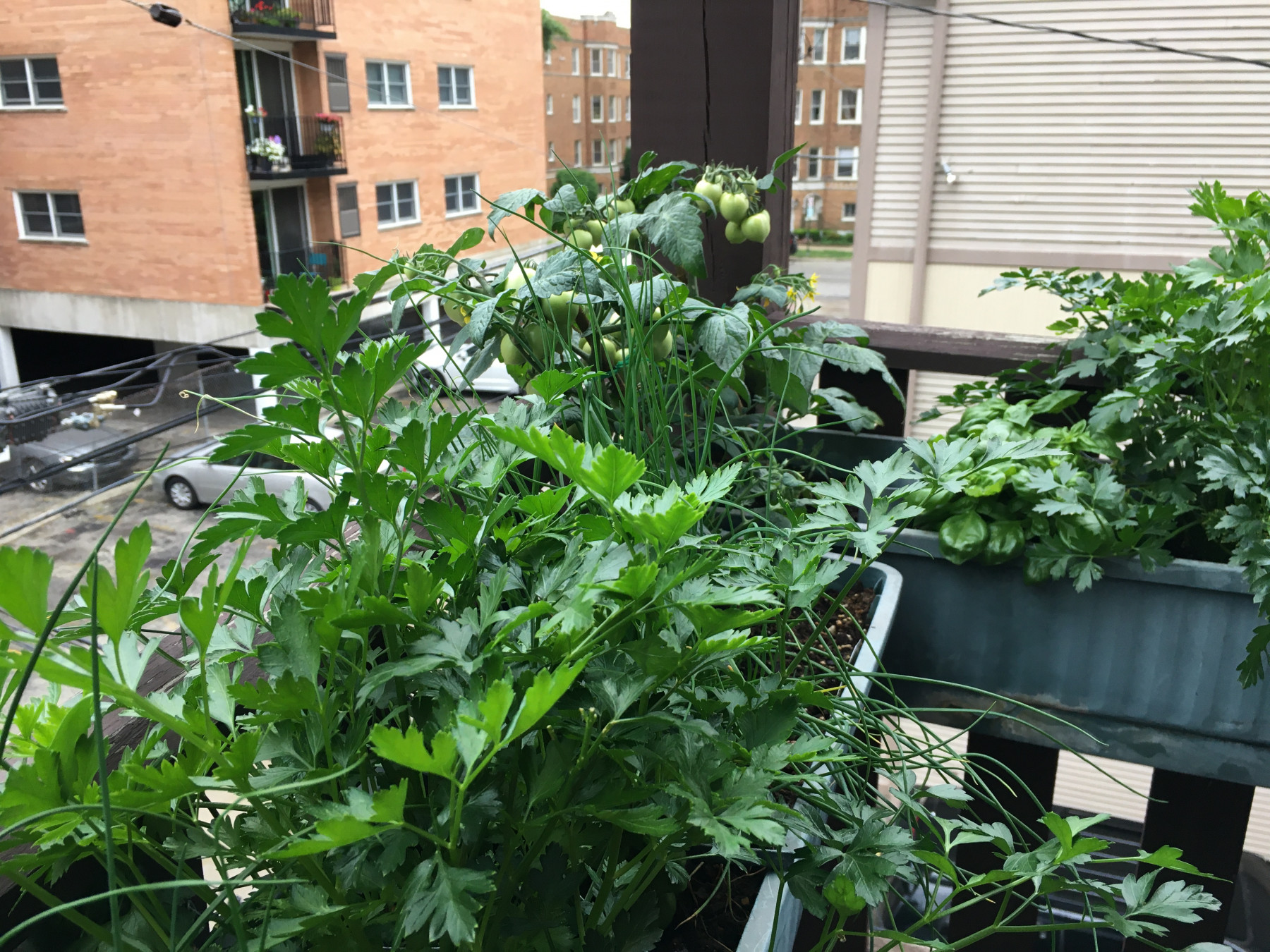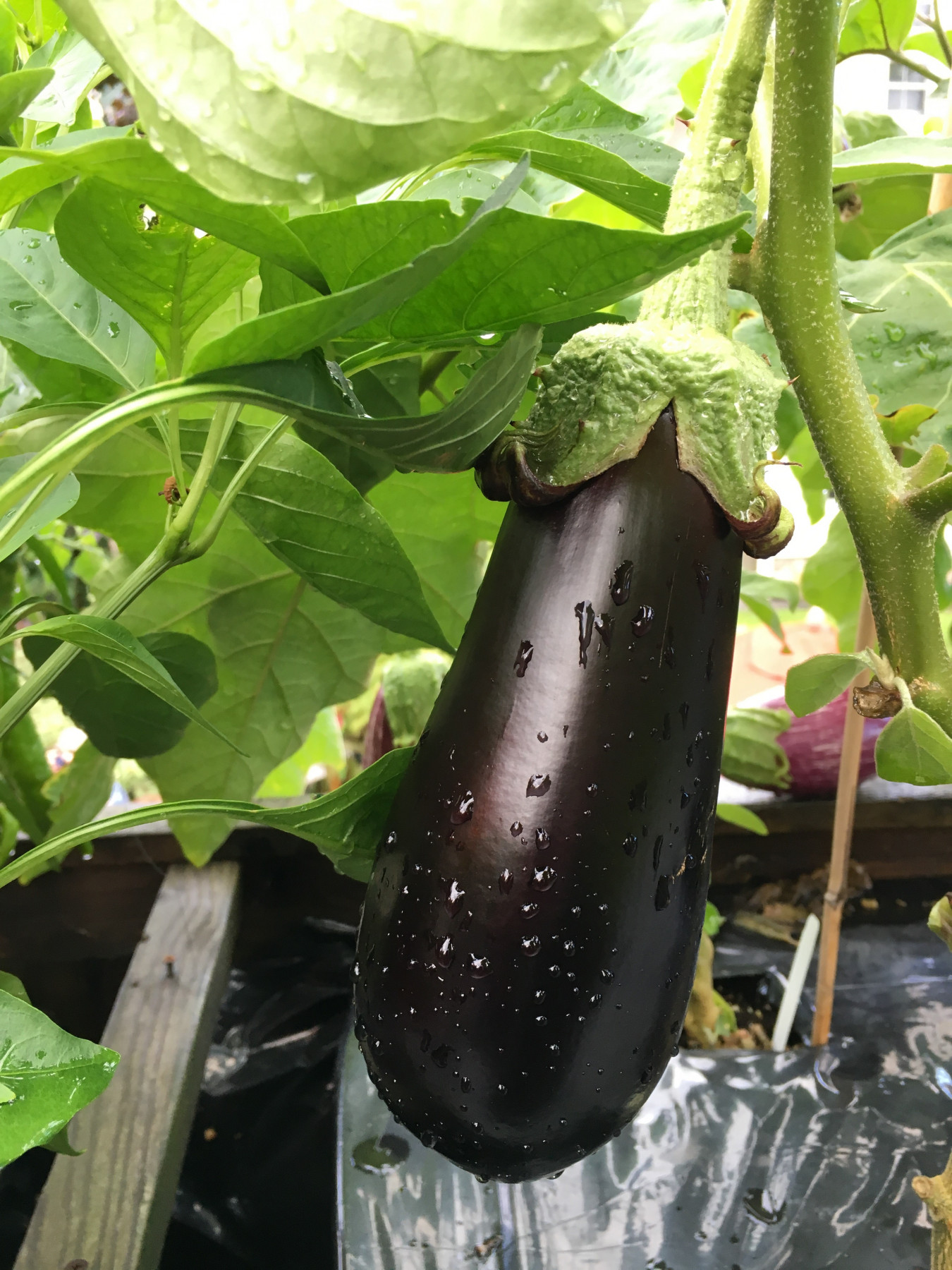
There’s been a big boom in vegetable gardening this spring, as many people sheltering at home from the coronavirus have seized the moment. Some may have simply been desperate for something to do. For others, after a few scary weeks when food shortages seemed to threaten, it may feel safer to grow at least some of what they eat (a similar edible gardening boom followed the 2008 recession). And many of us find comfort and connection in growing food.
What if you don’t have a yard? You still can get a crop. Many food plants can be grown in containers. In fact, I often recommend that new gardeners get the hang of it by growing in a few containers before they start building raised beds or digging up the yard for row crops. That first year, using good-quality purchased potting mix in containers is easier than struggling to improve garden soil.
Containers make food gardening possible on rooftops, apartment balconies, and porches. For more than a decade I’ve grown a wide array of herbs, as well as salad greens, tomatoes and other vegetables, in sub-irrigated window boxes and pots on my third- and fourth-story porches. I love being able to step out of the kitchen and snip a bit of basil or parsley or chives for a savory dish, or to pop a sun-warmed ripe cherry tomato in my mouth.
From my experience, here are a few tips for growing vegetables in containers:
Chase the sun: Full-sun plants like tomatoes and eggplants need at least eight hours of full sun a day to ripen. If you’re gardening on a balcony or near tall buildings, shadows may cut into your sunlight. One solution: Use containers on a rolling plant caddy or with built-in casters, so you can easily shift them during the day to keep the plants in sun.
Bigger is better: Having enough soil for your plants’ roots critical. Smaller or shallower pots may work for some plants such as herbs, or lettuce and spinach that you plan to eat as baby greens before there’s much of a root system. But plants that will set fruit need much more root space. I don’t recommend trying to grow a full-size tomato plant in any pot smaller than a five-gallon bucket. Make sure that whatever you plant in has ample holes in the bottom to let surplus water drain away.
Plan for watering: Plants in containers will dry out much faster than plants in the ground. This is especially true later in the season, when days are hot and plants have grown larger so more water evaporates from their leaves. Be ready to water every day in July and August. Steady watering for consistently moist soil is important to avoid many tomato problems.
Fertilize: Vegetable plants need lots of nutrients to develop flowers and fruit. I mix slow-release organic fertilizer into the potting mix when I plant in May, but I still expect the plants will quickly use up the nutrients available in the limited space of the pot. So starting in July, I fertilize every couple of weeks, using a solution of organic fish emulsion fertilizer. (Yup, stinky. But the smell fades quickly.)
Seek out small varieties: Today, vegetable varieties are available that have been bred for containers. They grow into compact, dense plants that are much easier to manage in pots and small spaces. For example, I’ve grown the cherry tomato varieties ‘Tiny Tim’ and ‘Red Robin’ in large window boxes, and this year I’m growing a newer variety called ‘Goodhearted’ from Proven Winners. Container varieties can be difficult to find in garden centers, and even ordering seeds on the web requires a certain amount of detective work. Search using words such as “compact,” “patio,” “container,” and “dwarf.”

Get a reservoir: The sub-irrigated container is a great invention that makes container gardening a lot easier. Basically, it’s a pot with a water reservoir at the bottom. Most of the soil is held up above the reservoir, with an air space in between, but a portion of it reaches down into the water to act as a wick. It draws water up into the root zone slowly and steady, matching the rate at which the plant uses it. The soil stays evenly moist, but never wet. Although these containers are often sold as “self-watering,” of course they aren’t: You still have to fill the reservoir. Still, if the reservoir has a large enough capacity, you shouldn’t have to fill it as often as you’d have to water a regular pot. Covering the surface of potting mix with some kind of mulch will reduce evaporation and make the water reserve last longer.
Buy or DIY: Many companies make sub-irrigated containers, but you can also make them from plastic tubs or buckets and things you may have around the house. A quick internet search will turn up lots of methods. I’ve had success with both DIY and purchased versions (most of my current pots are from Gardener’s Supply). Whether you make or buy sub-irrigated containers, three things are critical: There must be an easy way to fill the reservoir, the soil must be held up above the reservoir, and there must be an overflow hole so the water level never rises high enough to soak the soil and rot the plant’s roots. It’s also important to make sure there will be enough soil volume for the roots of the plants you plan to grow.
Container vegetable gardening puts crops within reach for almost anyone with a scrap of outdoor space. I can’t wait for my first ripe tomato.


